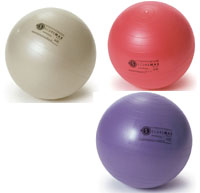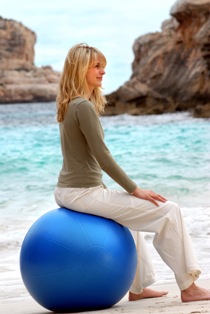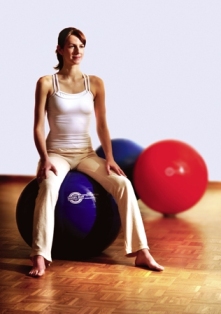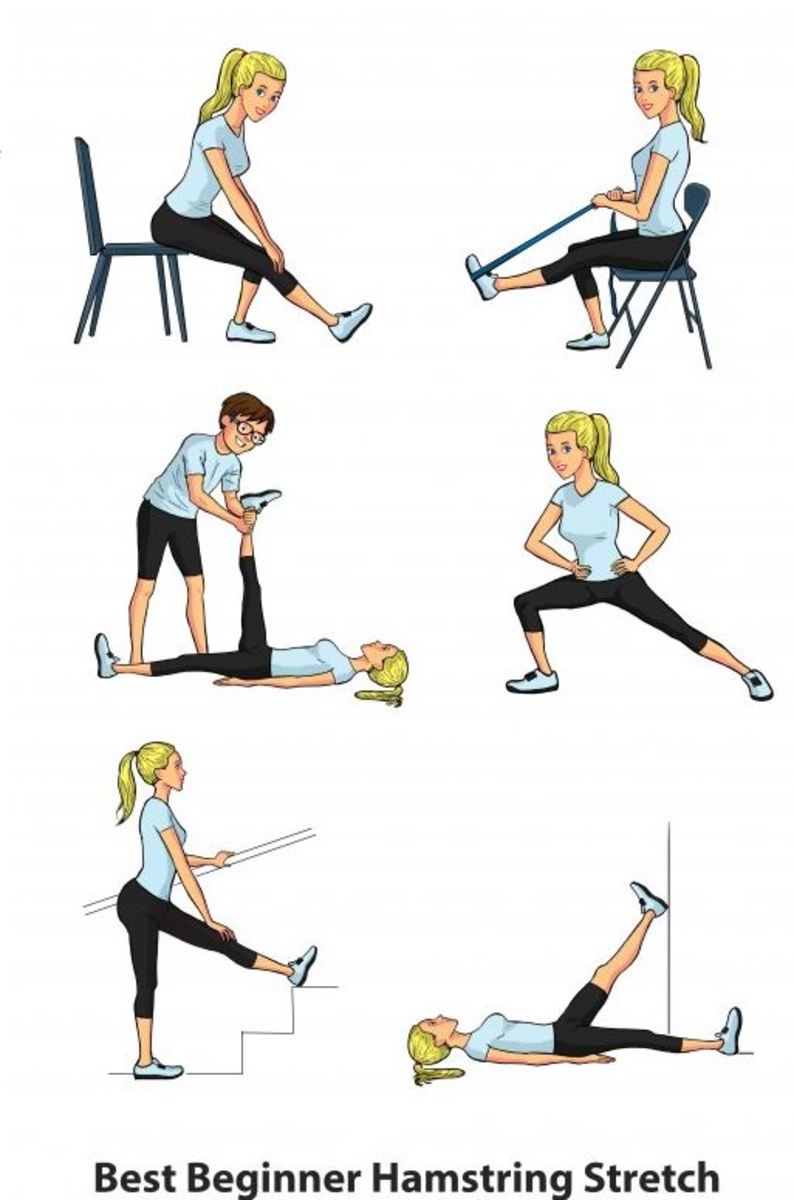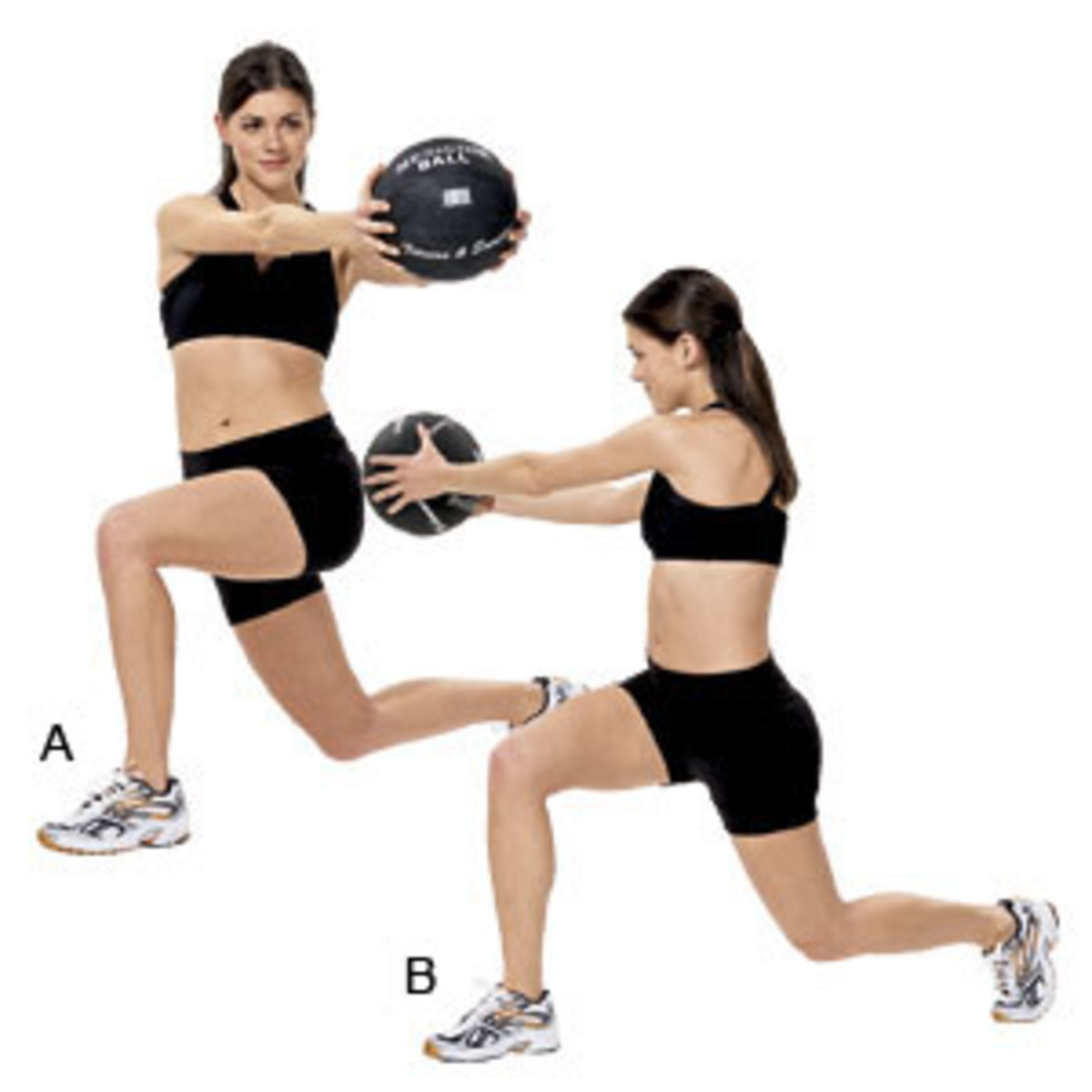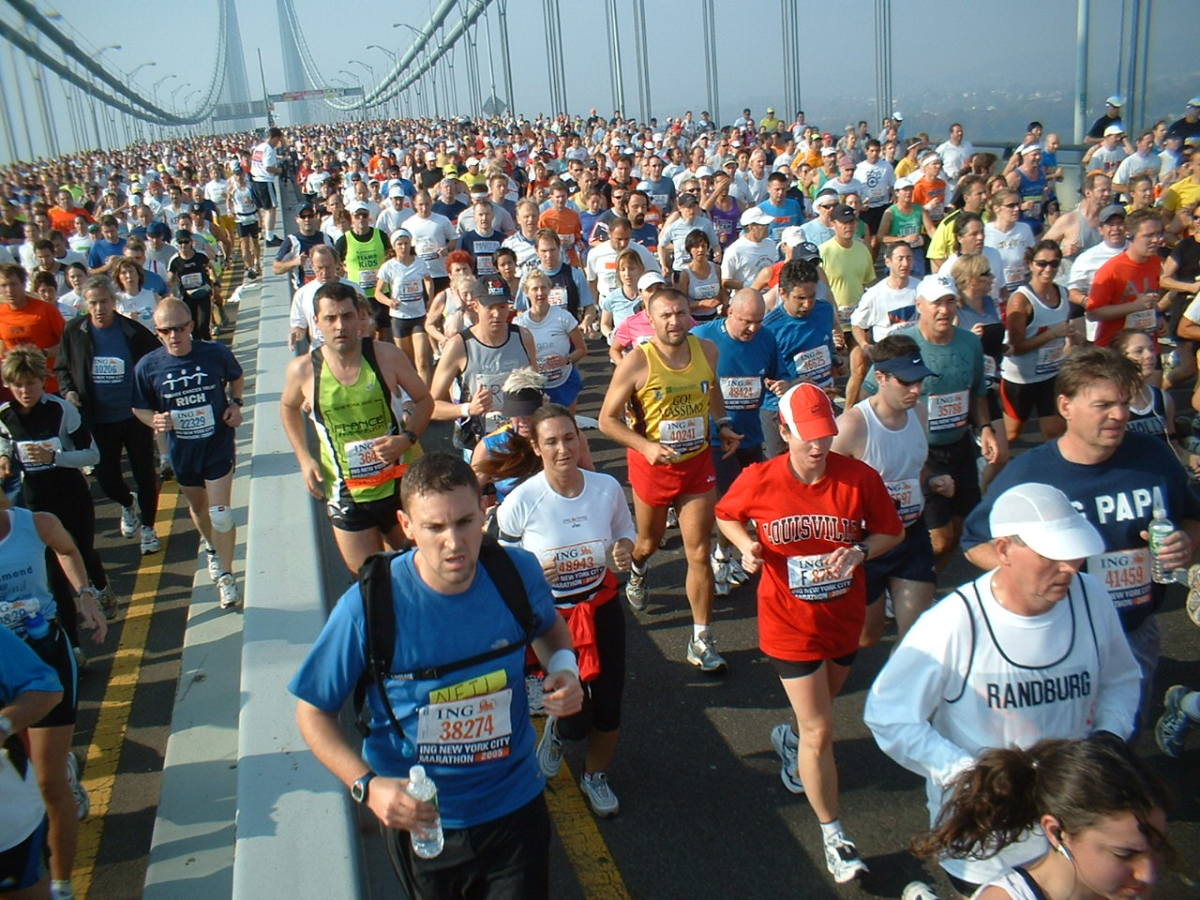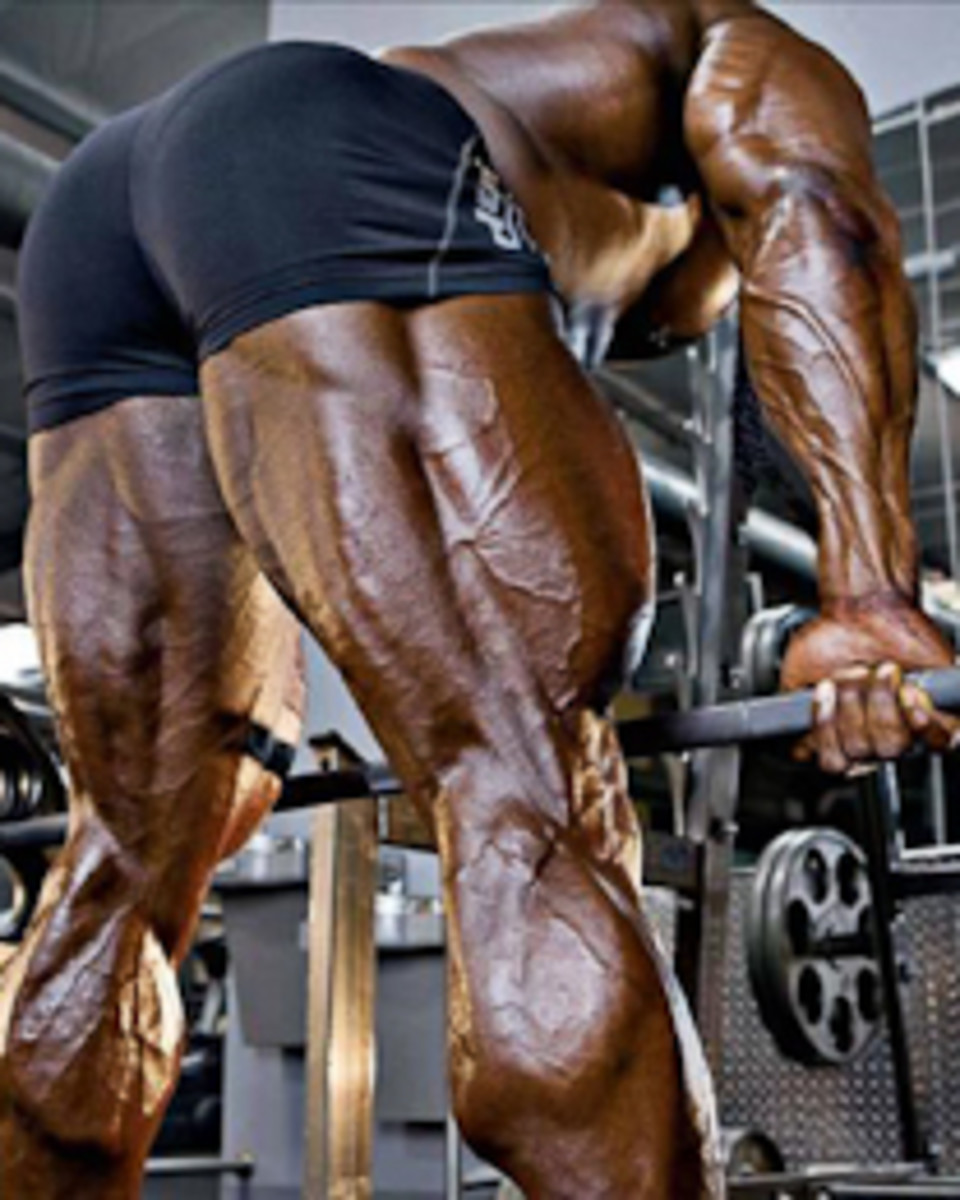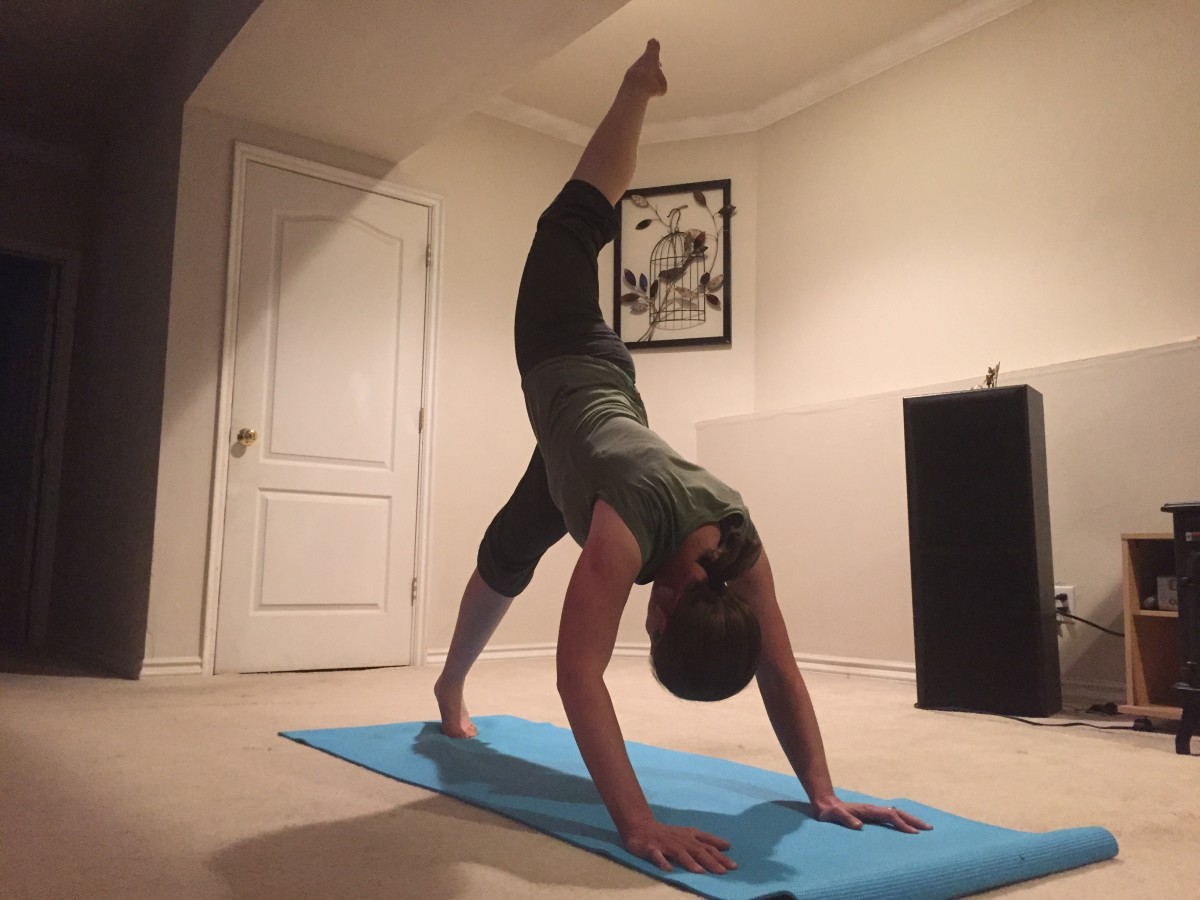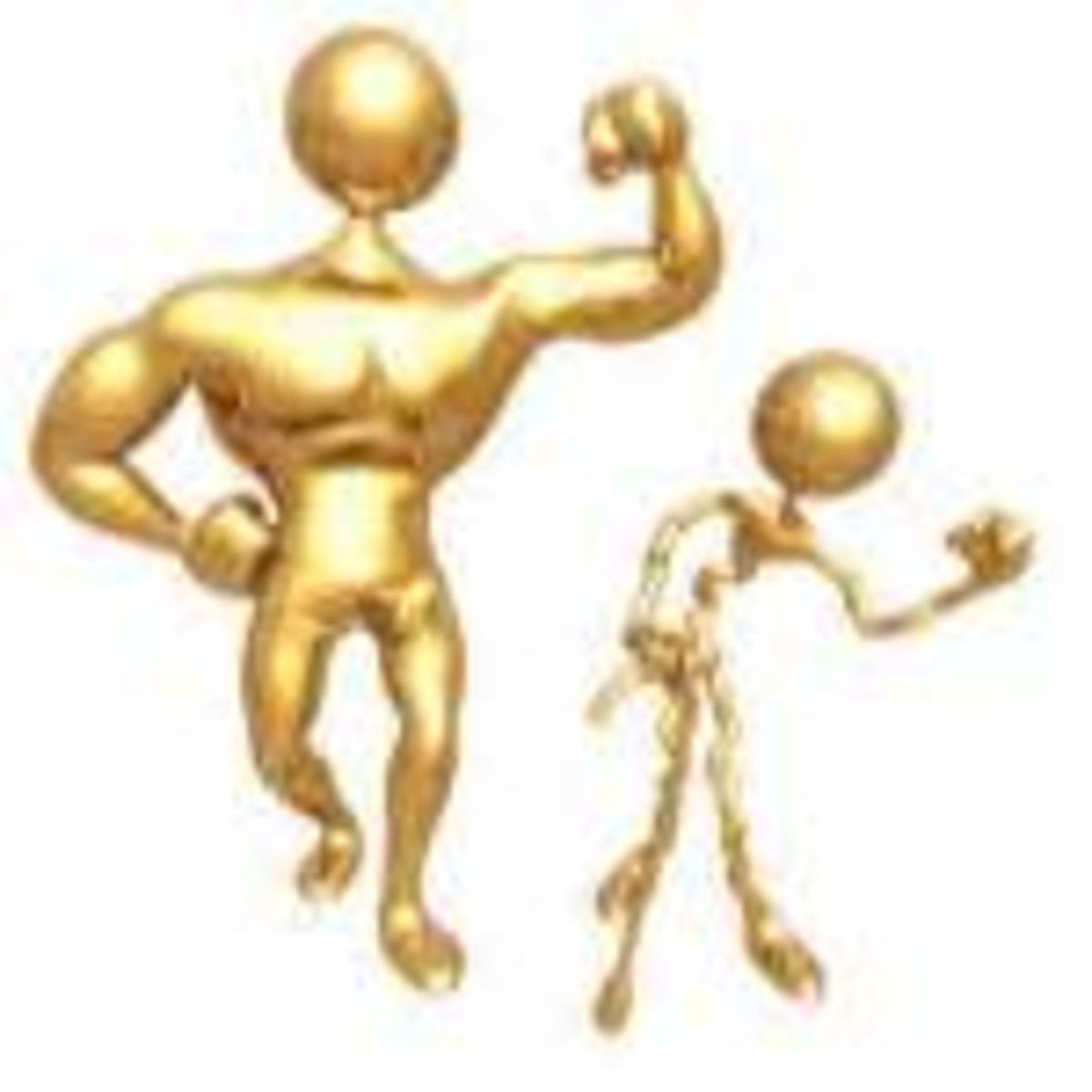How to Strengthen Your Back Muscles Just by Sitting
The Single Best Fitness Investment a Cube Dweller Can Make
Problem: If your job has you sitting all day every day at a computer, your body will suffer because of it. Your hunched posture, chronic back pain, spreading waistline and weaker muscles become more evident.
Solution: The Swiss ball, the large inflatable balls that are commonly seen at gyms, can be used as a desk chair. It is the single best fitness investment you can make.
When you sit on a Swiss ball, you will:
- Develop better posture
- Burn additional calories
- Strengthen your muscles
- Stretch your back muscles
All for the modest price of about USD$25.
What other fitness device can you buy that you can use for 40 hours of week, week in, week out that benefits your entire body for that price? None.
Here is what makes the Swiss ball effective: instability. When you sit on a Swiss ball, your body works to keep you stable. Since the ball is inherently unstable, your muscles are working all of the time. This is how you realize the benefits listed above. You are getting an 8-hour workout for free. Let me repeat that: free.
A splint is a medical device that immobilizes a body part, like a broken finger. A chair is nothing more than a splint. It immoblizes your back. Watch a meeting for 10 minutes and you'll have bad postures all over the place.
The Swiss ball, without a back against which to slouch, forces you to sit up. At the same time, the micro-movements the ball makes keeps your back moving, so it's different than sitting on a bench or stool. Both of those are bad splints.
The human body was designed to move. It was not built for sitting still for hours on end. The Swiss ball addresses the your body's need to move by placing you in an environment dominated by movement. You are always moving when you sit on a Swiss ball.
I have been sitting on Swiss balls instead of chairs since 1998. My back feels great, both from the strengthening and the stretching. I have put in many long days and nights working on the computer while sitting on the ball. I don't miss a chair one bit.
When I worked in Corporate America, I would roll the ball to meetings and continue to get the benefits.
Bottom line: sitting on a Swiss ball is a free workout. You don't have to set aside time for a gym workout. This is an incredibly efficient use of your time because you are working and exercising simulaneously.
Different colors, different sizes
Click thumbnail to view full-size


The Swiss Ball Stars in The Office
The Swiss ball featured prominently in several episodes of NBC's The Office. It held its own right up until it met its fate at the hands of someone who no doubt runs with scissors (scroll down to see the ball's demise).
The Swiss Ball Stars in The Office
Kids have better posture, longer attention span
- Exercise balls replace chairs at Canadian elementary school
The Simcoe Reformer (Thu 07 Feb 2008) reports that students are bouncing off the wall over their new seating arrangement at Elgin Avenue Public School.
Working on the Ball: A Simple Guide to Office Fitness
In their book, Sarah and Jane give the benefits of sitting on a Swiss ball and also show how much fun you can have with them. In the YouTube video below, they give a quick overview of the benefits.
A 40-hour workweek is 25% of your week, so taking this advice to heart can help you tremendously.
Working on the Ball: A Simple Guide to Office Fitness
Book Review
- Sitting on a ball keeps office workers on a roll
Picture an office teeming with workers who couldn’t be more on the ball. Chests open, shoulders straight, trunk muscles offering plenty of anti-slouch support.
Working on the Ball: A Simple Guide to Office Fitness
Swiss Balls on Amazon
On the Ball
Here are some of the simple exercises you can do while sitting on the Swiss ball and still be productive at work:
- Lift your feet off the ground, forcing your body to work harder to keep you stable
- Roll down and forward and then stretch out on the ball while on long phone calls
- Roll back while leaning forward to stretch the lower back
Instability
As you develop stronger muscles, you can increase the instability by resting your feet on a small footstool. If you place your feet close together, you are less stable. Your body compensates by working harder to keep you upright.
When you're really good, you can lean back a little, allow your feet to suspend in the air, and use just your hands to keep you balanced. Bonus: when you're sitting in a boring meeting, this will keep you awake and give you something productive to do.
Stretch Your Back, Part 1
What do you do on long phone calls, or worse yet, long boring conference calls? Play solitaire? Search through your e-mail? How about getting one awesome stretch?
Simply roll forward, allowing your lower back to make contact with the ball. Continue rolling forward as you ease into the stretch. Stop when you think you can stretch no further. Your goal should be to stretch out until your hips are at the top of the ball. Make sure your phone cord can reach (falling phones are always a distraction).
At the end of a long day, you'll hear your back crack plus you'll get an unbelievable stretch.
Bonus stretch: If you have an office, you can close the door and lie face down on the ball while continuing your phone call. You must be careful when employing this technique, as someone could get the wrong idea if you are spotted in this position.
Stretch Your Back, Part 2
If the bonus stretch is not for you, you can approximate it by rolling your butt backwards and leaning forwards at the same time so as to keep your center of gravity over the ball. The more you bring your knees to your chest, the more you will stretch your lower back.
Swiss ball article
- The Four Best Ways to Sit at Your Computer
A blog entry that reviews four alternatives to sitting on a chair when working on the computer.
Exercises to develop your balance
This short video gives you some simple exercises to strengthen your abdominal and lower back muscles while sitting (then kneeling) on the ball. Stronger abdominal muscles results in less back pain.
The ball used in this video is much too large for use at the workplace for a person of her height. It should be deflated so that her feet are firmly on the ground.
Exercises to develop your balance
Sitting Balance on a Swiss ball
A side view of how to balance on a Swiss ball.
Developing your balance helps you in real life situations, such as when you stumble on a wet surface.
Sitting Balance on a Swiss ball
Kinds of Swiss Balls
There are several kinds of Swiss balls. I make 3 distinctions, although manufacturers may vary.
- Lightweight ball - burst-resistant, most unstable
- Medium strength for bodyweight exercises - anti-burst, more stable
- Heavy duty - anti-burst, capable of sustaining weight-training exercises
The lightweight ball can pop like a balloon and send you to a hard unexpected landing on the floor. You really have to be careful about staples and thumbtacks that might lurk on the floor. On the other hand, this design tends to have a more "lively" unstable characteristic. It will move the most under load.
A former coworker of mine (weighing some 275 pounds) sat on one for several months. He had the habit of rubbing the Swiss ball against his metal desk. One day, he showed me the remnants of a shredded Swiss ball that had exploded under him, laying him flat on his back.
The bodyweight version retains some of the lively characteristics of the lightweight ball while not popping like a balloon. It will hiss during a deflation but not send you crashing.
This kind of Swiss ball is not designed for heavy weight-training. You can use it not only for sitting but bodyweight exercises such as pushups, back extensions, etc. It will give you peace of mind that you won't experience a rapid decrease in altitude.
The heavy duty version is intended for weight-lifting. Its shape is more like an egg. It is the least "lively" of the bunch. This design is good for withstanding hundreds of pounds of extra weight, such as when doing a bench press. For people who have a poor sense of balance, it is also good for sitting.
More Exercises and Stretches
Here are some more exercises you can do in your office when you need a quick break:
- Crunches
- Sidetwist
- Balancing
Crunches
Work on that six-pack by adding several sets of crunches to your day. If you want extreme crunches, lock your feet under the desk and roll back as far as you can.
Sidetwist
Get another great back crack and stretch by placing one hand behind you on the ball and one to the side. Look back to that side, roll forward slightly and stretch your back. If done correctly, you can get a great back crack up and down your spine. Repeat going the other direction.
Balancing
Lift your feet off the ground, take your hands off the desk and balance without touching any support. See how long you can hold your balance.
I actually put on and take off my socks and shoes every day using this method. By doing this, I force myself to balance under asymmetrical conditions and shifting weight distribution.
Diet.com Quick and Simple Office Workout
A short demo video of how to do some exercises that can work with the ball or a chair.
I disagree with her statement that the maximum time on the ball should be limited to twice daily of up to 30 minutes each session. Instead, you should avoid the chair at all costs.
Diet.com Quick and Simple Office Workout
How to Choose a Swiss Ball
You should select a Swiss ball based on your height and your usage..
Usage:
- Sitting only
- Sitting and exercise
- Exercise only
Sitting only
A Swiss ball that is used for sitting only should be underinflated. Sitting on a marble is no fun. Underinflating reduces the instability of the ball as well.
If you are getting a Swiss ball for sitting only, I recommend the burst-resistant ball. Since it is the most unstable, it will give your body the best workout when underinflated.
Sitting and Exercise
If you want the Swiss ball to do double duty, then an anti-burst ball is the choice. Since you are using this for exercise, you cannot underinflate it. An anti-burst ball will be soft enough to sit on yet, strong enough to withstand body weight exercises. The heavy-duty Swiss ball is more comfortable than the body-weight version at full inflation but the body-weight version is more unstable, which is what you want when sitting.
Exercise only
An anti-burst version is necessary when doing exercises, whether bodyweight or iron-laden. If you only do body-weight exercises, the anti-burst model will do, but if you're lifthing weights, you need to go with the heavy-duty model.
Height
The size of the ball you get depends on your height. A good rule of thumb when sitting is that your hips are slightly higher off the ground than your knees.
A Google search on this topic showed differing opinions on what size you should get. I recommend you do the search and decide for yourself. I am 5' 8" and have been quite happy with a 65cm ball for exercise and an underinflated 75cm ball for sitting.
If you are using the ball for sitting only, get one size larger and deflate it. If you are exercising with the ball, get the recommended size because you will need it to be fully inflated.
Risks and Dangers
No fitness device is without its risks. Here are some safety issues when using a Swiss ball for sitting and fitness:
- Losing balance
- Swiss ball rolls away when attempting to sit down
- Popping
- Leaning over incorrectly when picking something up
Losing balance
Like any unstable device, you must keep your balance in order to avoid falling. Leaning back should be done with a strong awareness of what is behind you. When you are first starting out on the Swiss ball, you should have sturdy supports around you.
Swiss ball rolls away when attempting to sit down
Like any ball, a Swiss ball can and will roll, sometimes when you least expect it. Many floors are not perfectly flat, and a slight tilt will roll the ball away. Be sure to hold the ball as you sit on it.
There are various stabilization accessories for Swiss balls. One resembles a large saucer. It will contain the ball in one spot. Swiss ball chairs contain the ball entirely, but this gets expensive.
Popping
The lightweight model can pop like a balloon. Tacks, pins, staples and other sharp objects are the death of a Swiss ball. Wear and tear over the years also takes its toll on the material.
You need to be proactive and prevent injury by doing periodic checks of your floor for sharp objects. Identify potential or actual leaks and repair them with a tire patch kit.
If you replace or repair your Swiss ball on the first hint of leakage, you will prevent much pain and grief.
Once, I tried to prolong the life of a lightweight ball by patching up a significant-sized hole. About 10 minutes after inflating it, I heard a whoosh and suddenly I was on the ground. I happened to be eating food at the time, but was able to maintain my hold on the container and did not spill it all over myself as I went down.
The moral of the story is to treat your Swiss ball like your car tire. You don't want to take chances. If in doubt, replace it.
Leaning over incorrectly when picking something up
One problem I have seen is the temptation to treat the ball like a regular chair. If there is an object to the side of you, you try to lean over and grab it. It works when you are in a chair because it is stable, and will support your weight while it is off-center.
It does not work for the ball because it is unstable. I have heard of colleagues falling off the ball while trying to grab objects off to the side. Resist the temptation. Get off the ball and pick it up.
When Swiss Balls Burst
A dramatization of the danger of sitting on a burst-resistant rather than an anti-burst Swiss ball. Watch how fast he falls to the floor once the ball is punctured.
When Swiss Balls Burst
Ball, Scissors, Floor
In this dramatic sequence, Dwight learns the hard way why he should have purchased the anti-burst ball rather than the burst-resistant version.
If you listen carefully to the ending sound, you'll hear a slow whoosh, which is impossible with an exploding ball. That would have been appropriate for an anti-burst ball.
Ball, Scissors, Floor
Dwight learns the hard way that he should have gotten an anti-burst Swiss ball.
How an anti-burst Swiss ball deflates when punctured
A great demonstration of how an anti-burst Swiss ball responds to a sudden puncture. Note that it takes several seconds for the sitter to reach the ground and that the instigator wonders why the ball "didn't do anything".
This is the difference between injury and no injury.
How an anti-burst Swiss ball deflates when punctured
Swiss Ball Stabilizer
The Swiss Ball stabilizer is a low-cost and effective method to prevent the ball from slipping away from you. For those who have poor balance, this will alleviate concerns of the ball slipping away when sitting down.
This also functions well as a parking place for the ball during off-hours.
Swiss Ball Stabilizer
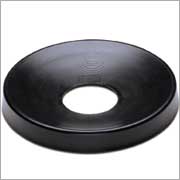
Swiss Ball Chair
A Swiss Ball chair is best for workplaces that have liability concerns. I do not like them in general because it takes away the benefits of the ball.
- Drives up the cost
- Lower calorie burn
- Less strengthening
- Less stretching
Drives up the cost
Not much more than glorified ball-holders, the prices for these devices can get astoundingly high.
Lower calorie burn
There is a lot less movement with a trapped Swiss ball, so you get only a fraction of the calorie burn than you would with just the ball
Less strengthening
With such a restricted movement, your muscles are not challenged as much. Additionally, your muscles have a more limited range of motion, reducing the benefit even more.
Less stretching
Are you going to lean back and stretch your back over the ball? Not likely because your body cannot roll with the ball. The beauty of stretching out on the Swiss ball alone is that you can ease into the stretch very smoothly and gradually.
With the ball locked, it cannot rotate, thus making it much more difficult to stretch out.
Getting a Swiss ball chair should be an act of desperation.
Swiss Ball Chair
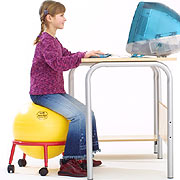
How to inflate a Swiss ball
Inflating a Swiss ball can be intimidating because you think it could pop at any second. Monitor the size of the ball with a measuring stick as you inflate it.
I have seen instructions telling me to inflate the ball 10% larger than normal during the initial inflation. This is to stretch it out a bit. It is not clear how long the ball should be overinflated, but I let it sit overnight before deflating it to make sure it has a good stretch.
Most times, you have two options to inflate a ball - your local gas station pump and your small car tire air compressor. If you use the gas station pump, be aware that it is very strong and will fill the ball rapidly, leading to a big burst if you do not stop it in time. A tiny air compressor takes a long time to inflate but it is much safer.
Once you inflate the ball, the next step is to deflate it to the proper height. Your hips should be slightly higher than your knees and your feet should be firmly on the ground.
You will probably have to adjust the height of the keyboard and/or monitor so that you won't hunch over when working on the computer.
Transitioning from chair to ball
Like any exercise routine, your transition from sedentary to movement should be gradual. A small amount of soreness is good - you're working out your muscles - but it should not be an exercise in pain tolerance.
Ease into longer periods on the ball over a few weeks until the soreness goes away. Your back strengthens as it adapts to the workout. Once you can sit on the ball all day, get rid of that chair.
Various Swiss Ball Techniques at the Office
Four different uses of the Swiss ball:
- Sitting
- Stretching
- Bouncing
- Throwing
For most corporate environments, #3 and #4 are not safe for work.
Various Swiss Ball Techniques at the Office
An Opposing View
- Opinion: Balls as Office Chairs a Bad Idea
An article which contends that Swiss balls should not be used as chairs.
A critique of the opposing view
I have been sitting on a Swiss ball as my primary seating device since 1998. As a computer programmer and video editor, I have spent many long days and nights at my desk in front of a computer. All of it was spent on the Swiss ball.
What back pain I do have came from bad weight-lifting techniques and plain stupidity by not lifting objects properly. When I sit on a chair, I find that I succumb to the bad postures that are endemic to sitting on chairs.
The article is too brief as to be truly informative to the layperson and suspiciously one-sided. Does that article propose that not one single community member with established credentials supports the use of a Swiss ball as a chair?
Very few specifics are given. No balanced comparison between the risks and benefits is listed.
The scope of the "sitting on the ball" is very narrow. No mention of the occasional stretches, back cracks and other radical changes in the sitting posture.
There is very little experimental data mentioned and much of the hand-wringing is related to potential, rather than actual injury.
It may be possible that the sources are quoted in an over-abbreviated form, which prevents readers from forming a well-informed conclusion.
There is a gross error about the balls not being height adjustable, when in fact they are by controlling the amount of air inside the ball.
It's not always clear what kind of chair the ball is being compared against. There a lot of lousy chairs out there.
Anecdotal evidence is weak in the illustration of the exploding ball (doing exercises and not just sitting, no less). I have seen chairs collapse under people including myself but that is not a valid reason to stop using chairs.
And of course, my favorite part is when the author of the article, himself the founder and owner of an ergonomics equipment and consulting company, suggests that the ones most vigorously touting the Swiss ball's benefits are the ones who stand to make the most money from them.
Well, that logic cuts both ways. He and the people he quotes (over half of whom don't have any credentials or background listed next to their name) lose the most money when people use the ball because there are less injuries to treat and less paid advice to give. He cannot sell as much expensive equipment or expensive advice to people who buy Swiss balls.
Note that I am not saying that author is motivated by money. I am only applying the author's logic back on itself. He, just like the promoters and sellers, can be be motivated by money in making their statements.
In short, this article does nothing to present an open and honest investigation into the use of the Swiss ball as a chair. It seems as if the Swiss ball is being compared to the perfect sitting device rather than to the typical chair, which has a wide variety of problems itself.
Care and Feeding of a Swiss Ball
Swiss balls are pretty much inflate and forget. I would have to add air to it every several months.
Soap water was the most I ever used to clean off the dirt.
The most important aspect of Swiss ball care is keeping it away from extreme heat, namely in a car on a hot summer day. The ball's strength characteristics may be altered for the worse after prolonged baking.
On the ball since 1998
I first sat on a Swiss ball in the summer of 1998. It was a Sissel ball, and that has been the brand I have used since then and recommended to others. I bought 3 different sizes and several different strengths - burst resistant, anti-burst and heavy duty anti-burst. I recommended them to everyone, to the point I assured people that I did not make a penny off them. I just thought it was a great way to improve one's health. I made several group purchases on behalf of my coworkers.
Not only have I sat on them, but used them for weight-lifting. I think the Swiss ball is an incredible invention that everyone should use.

